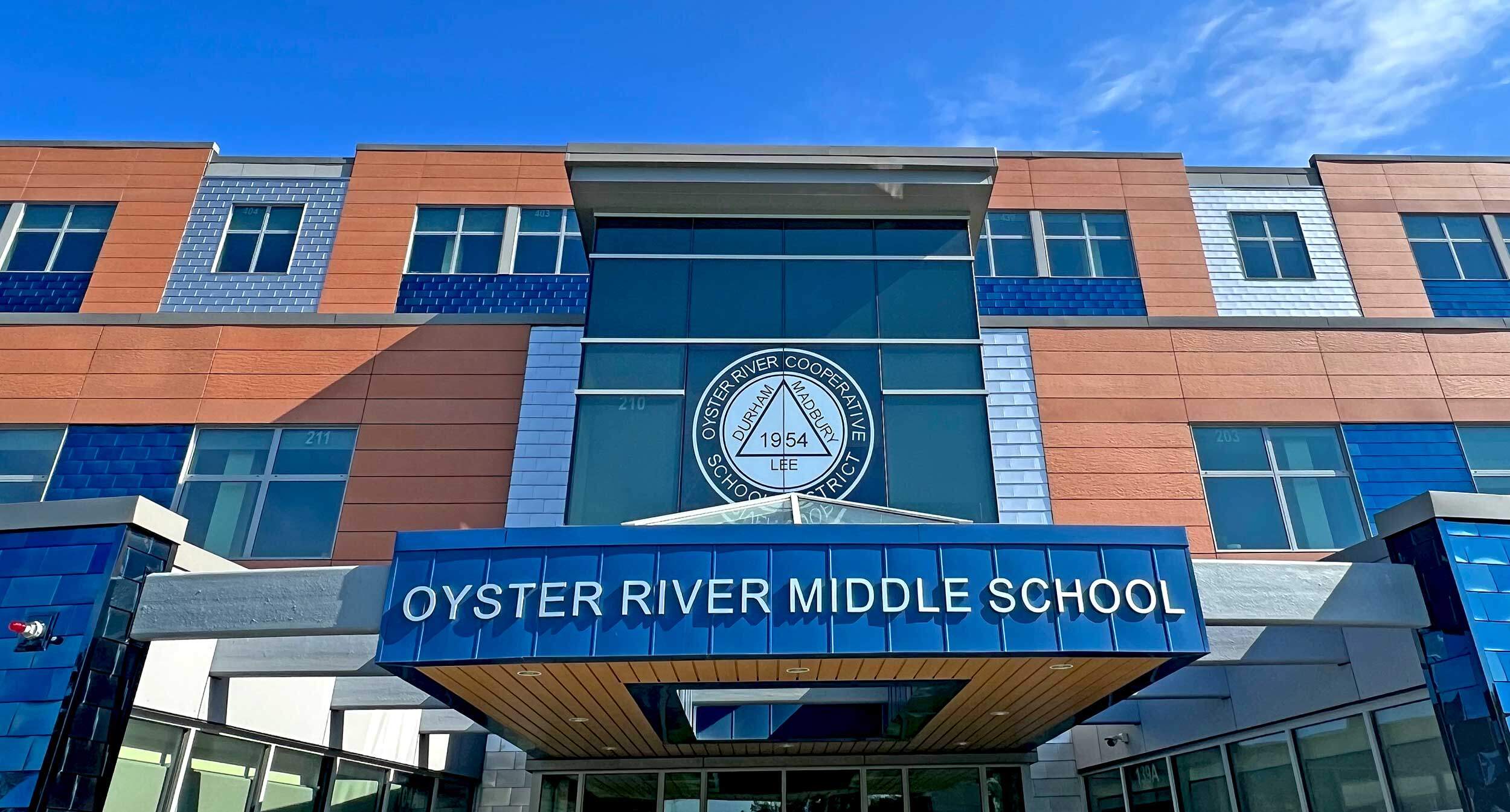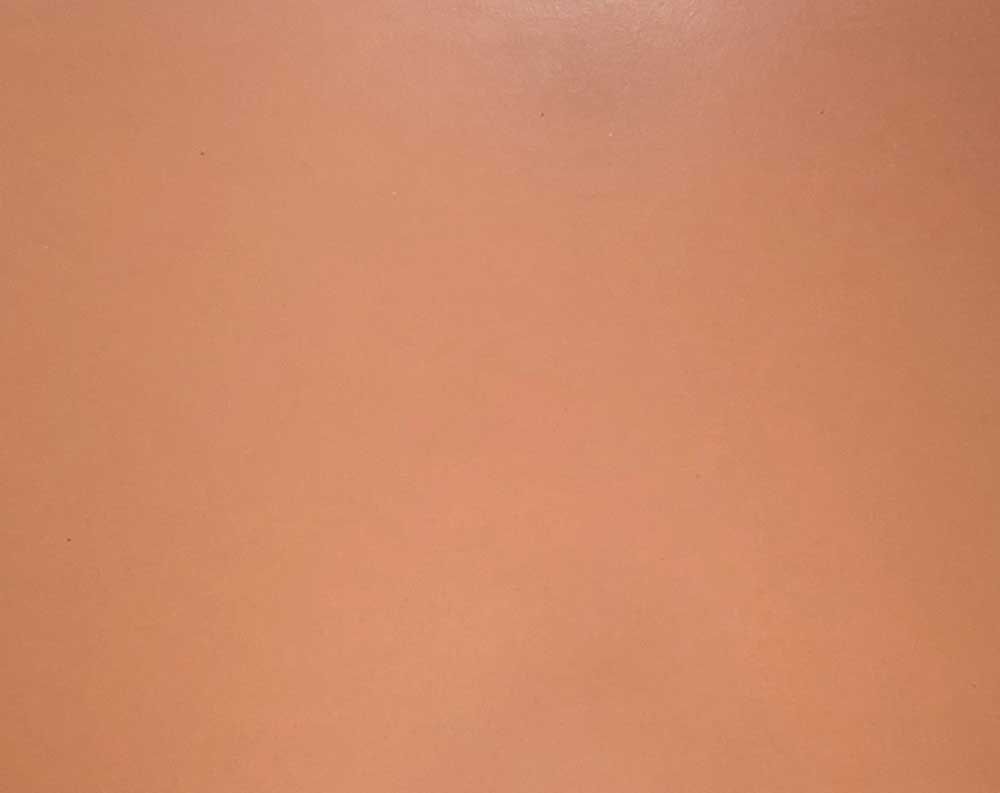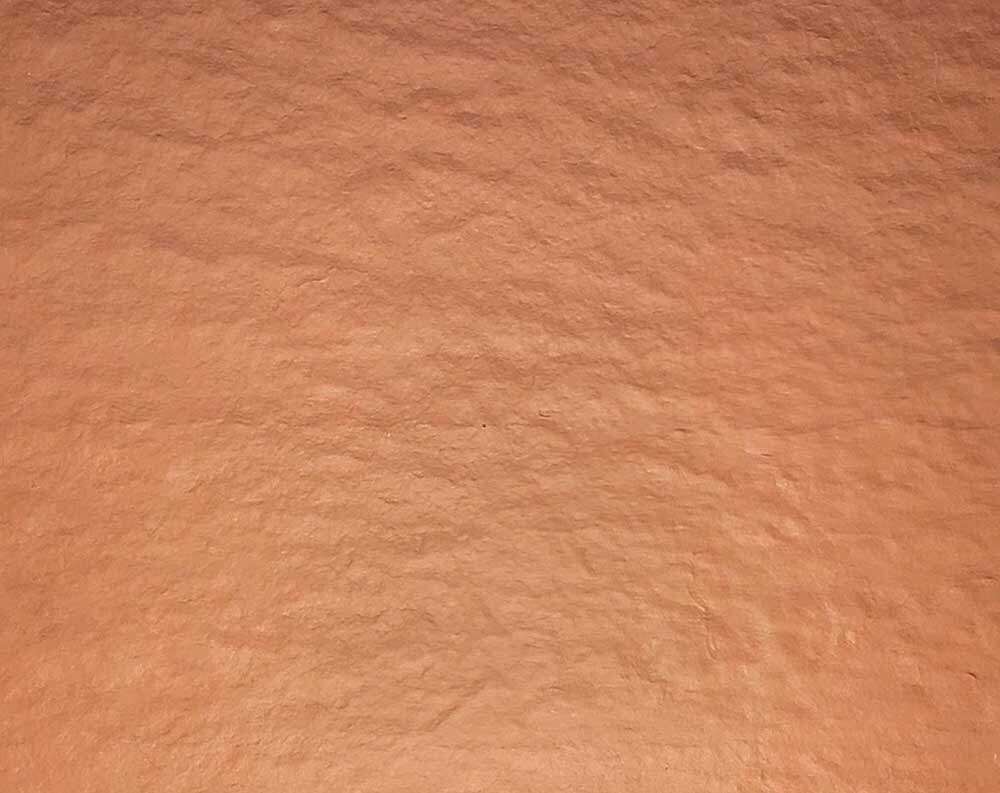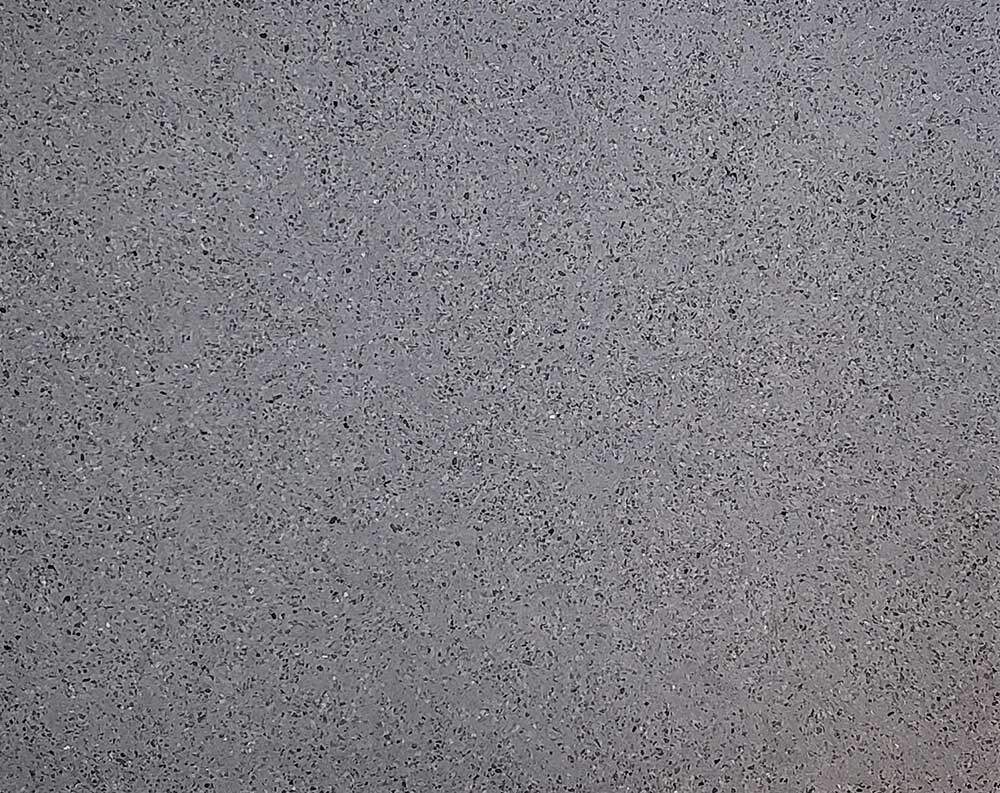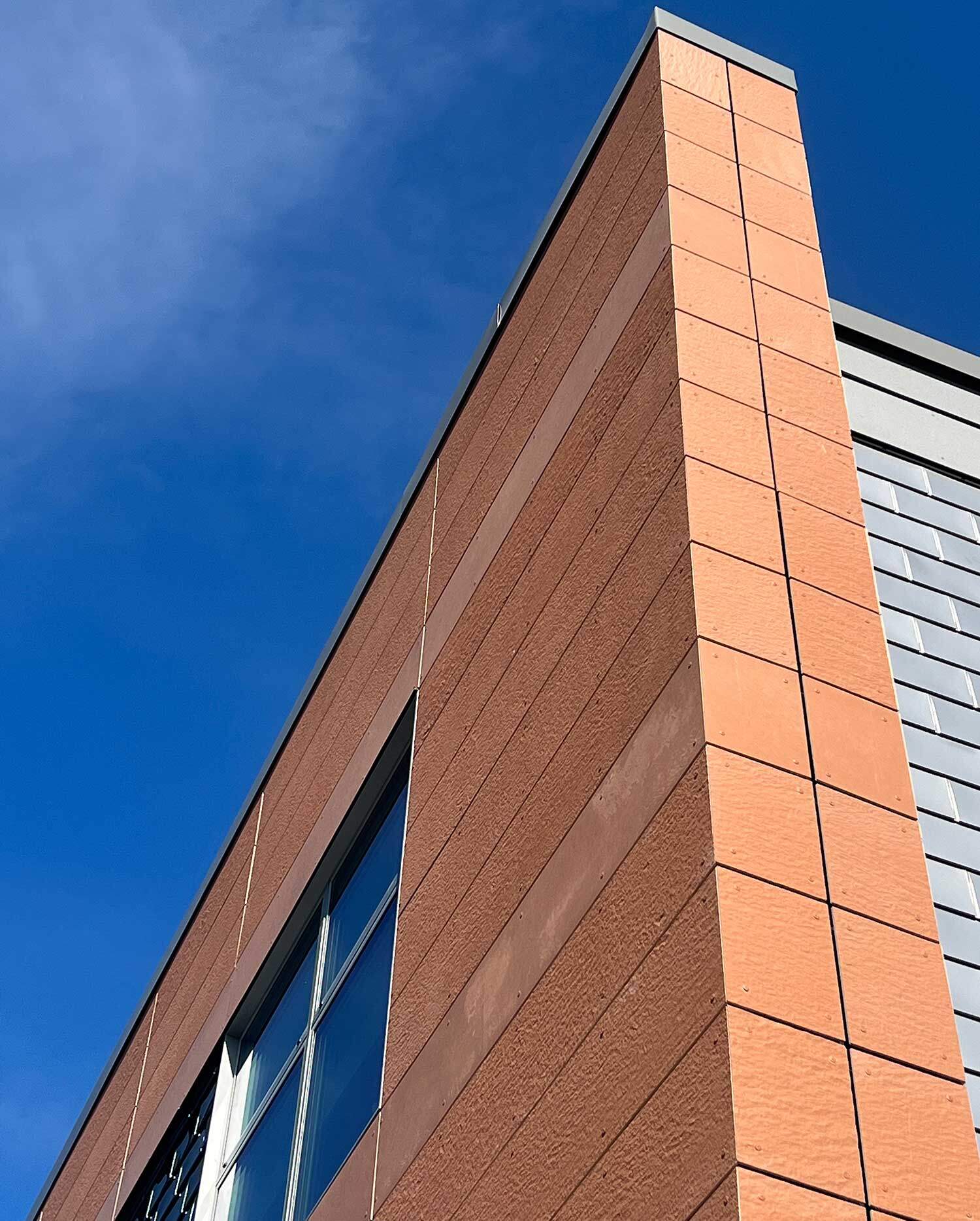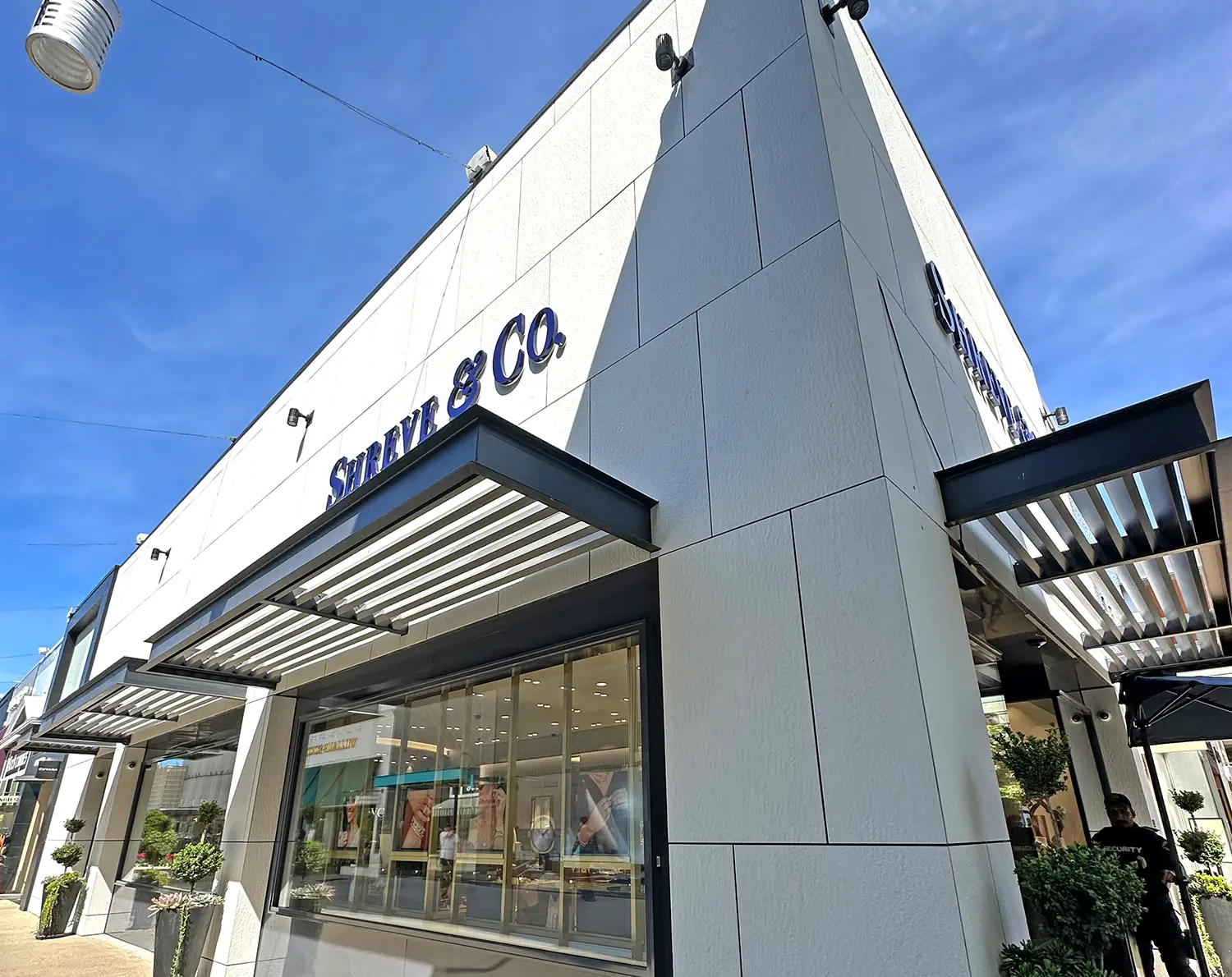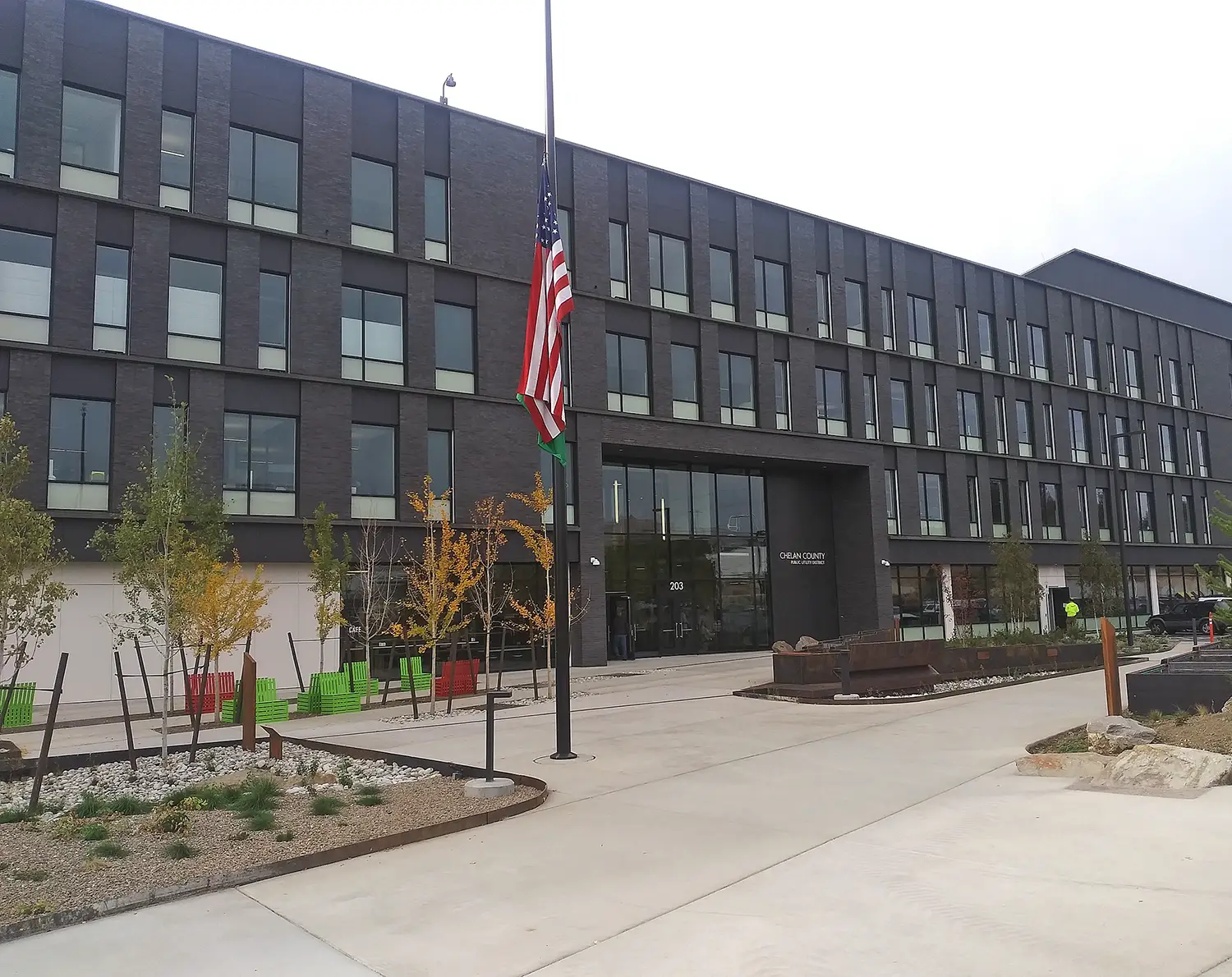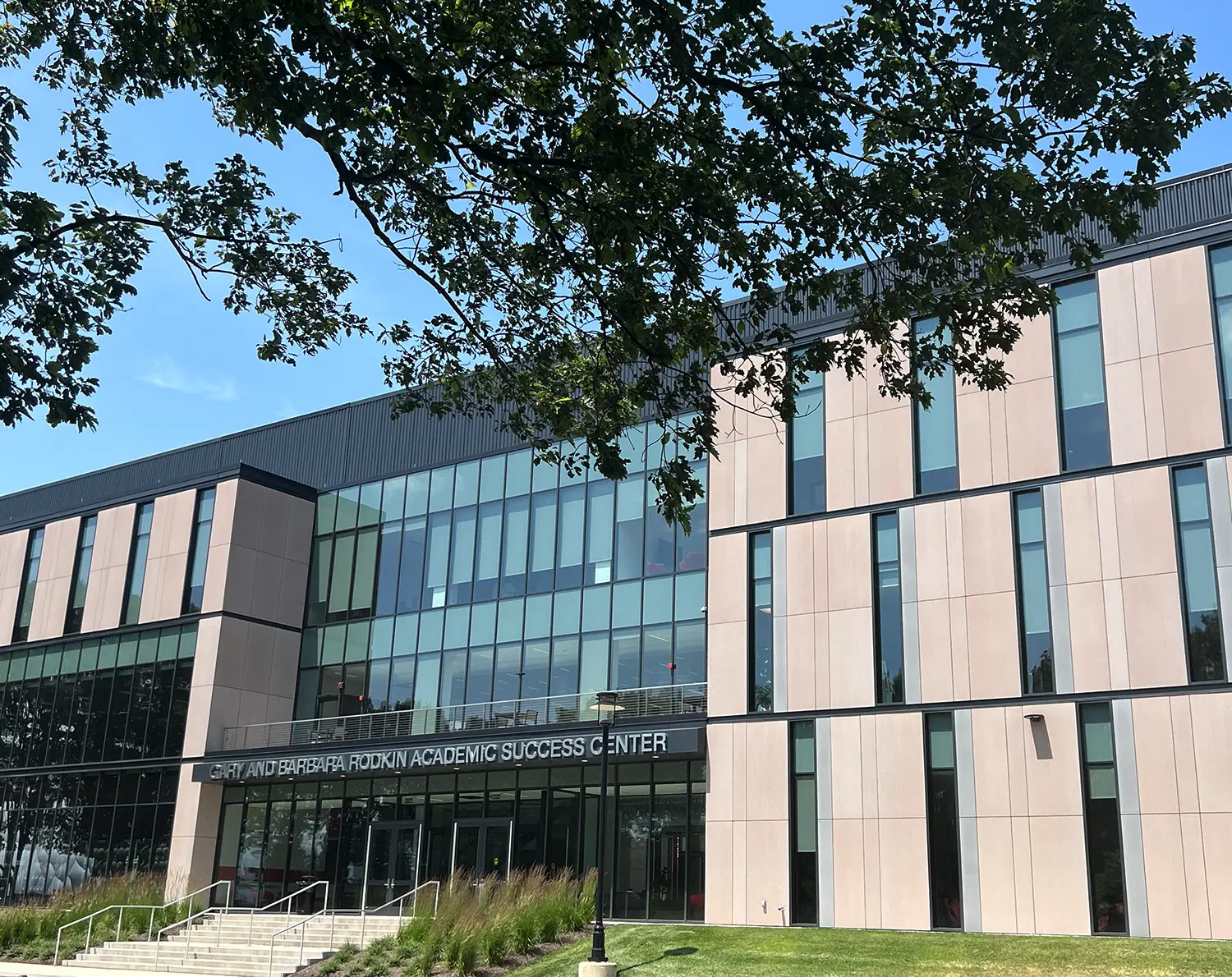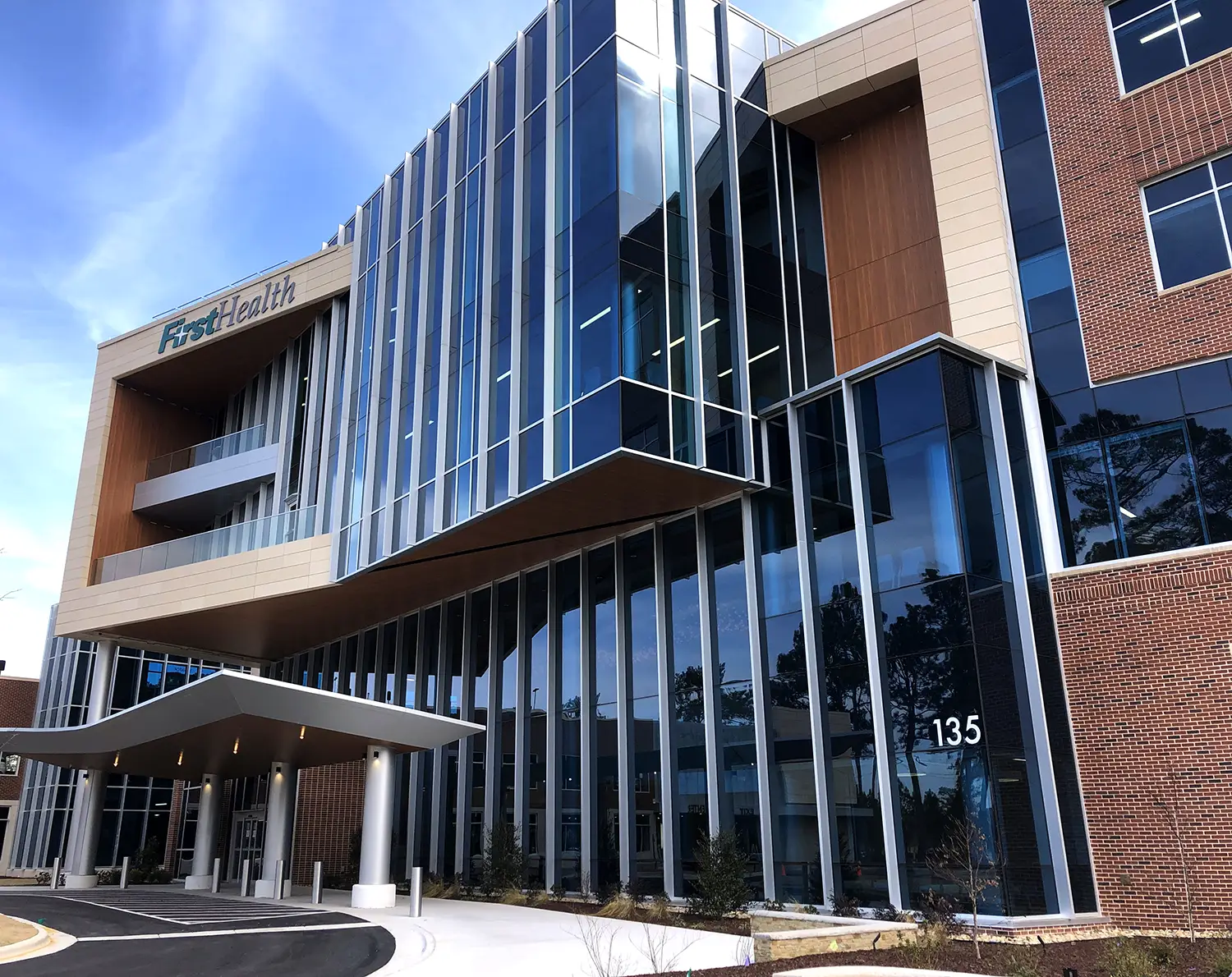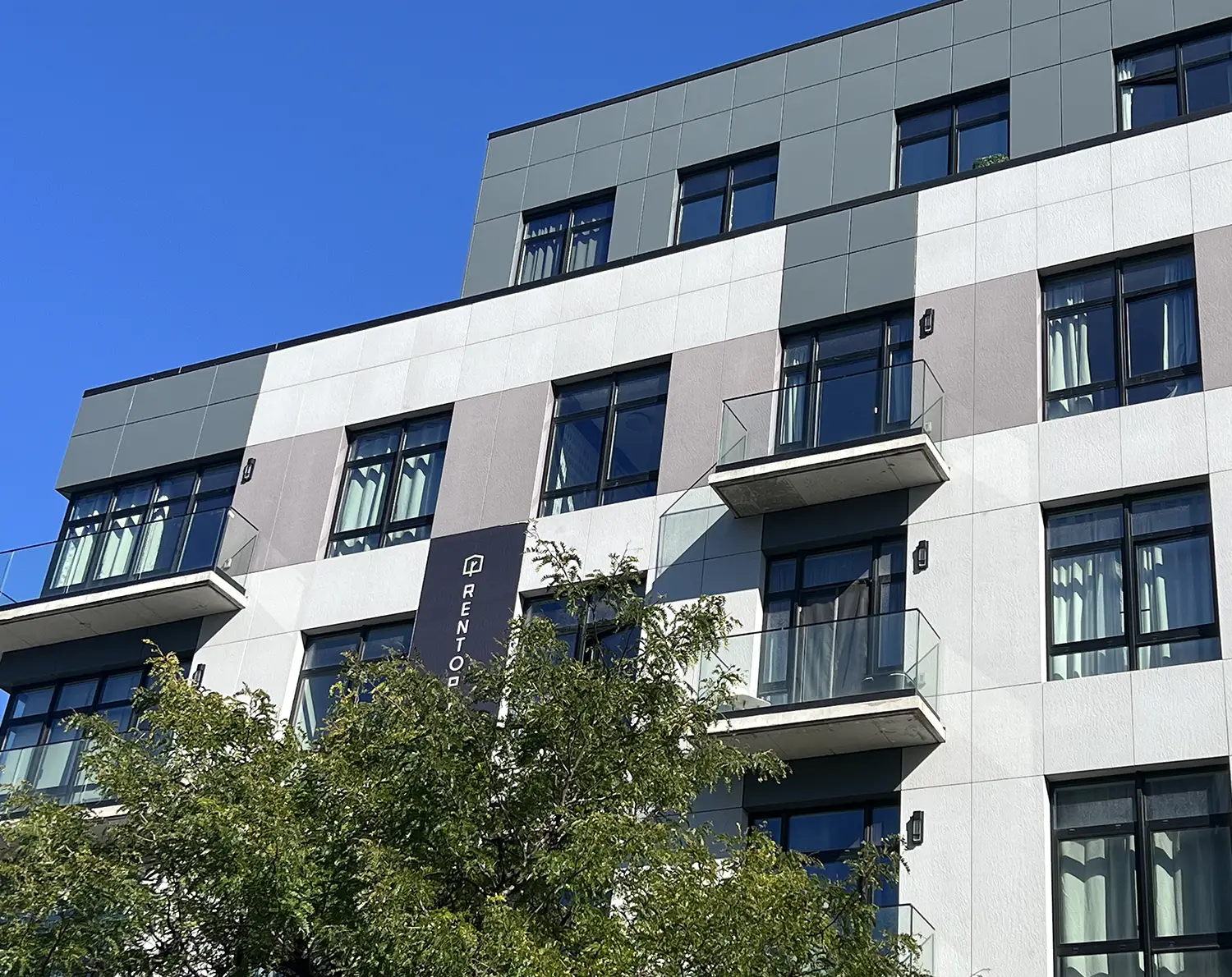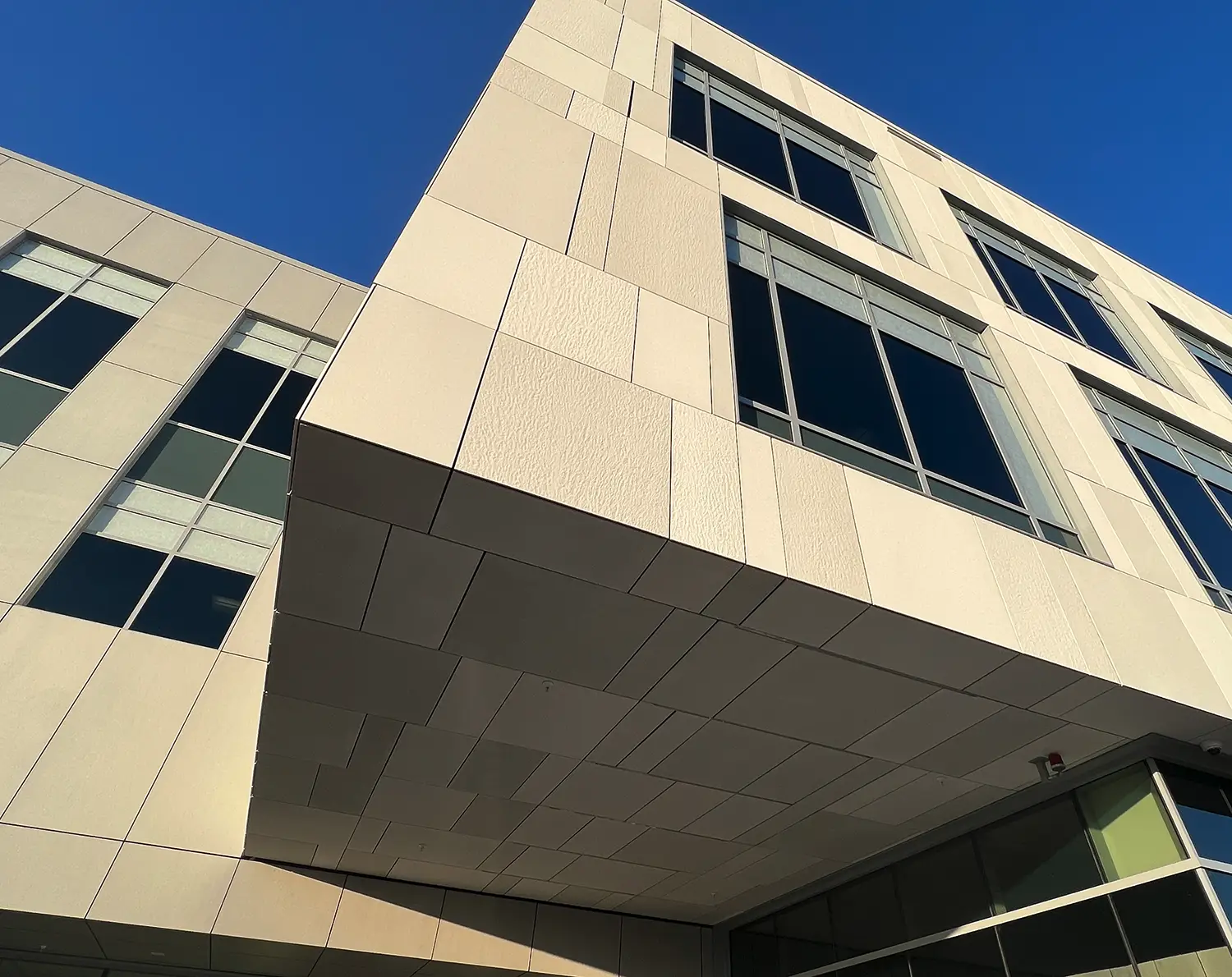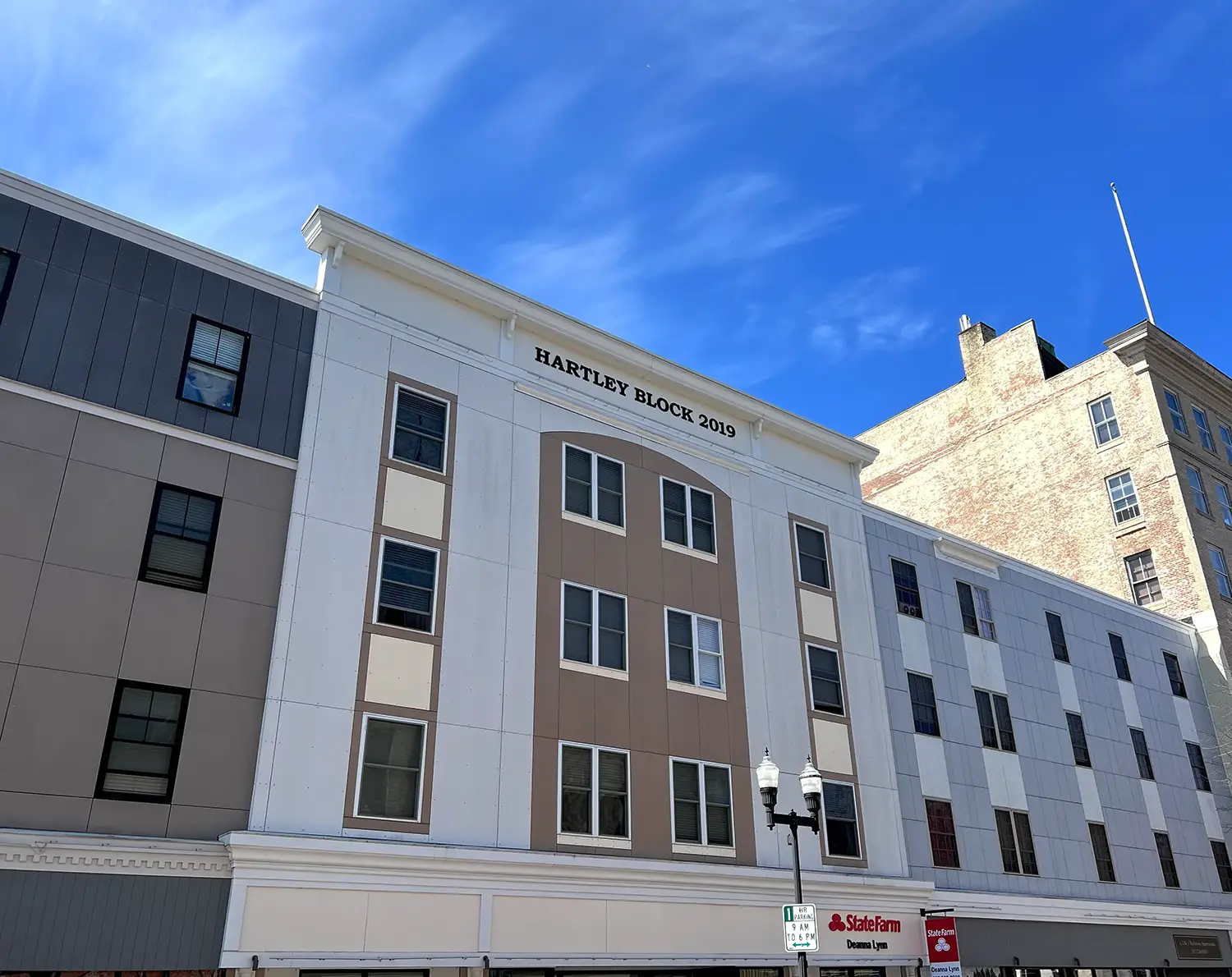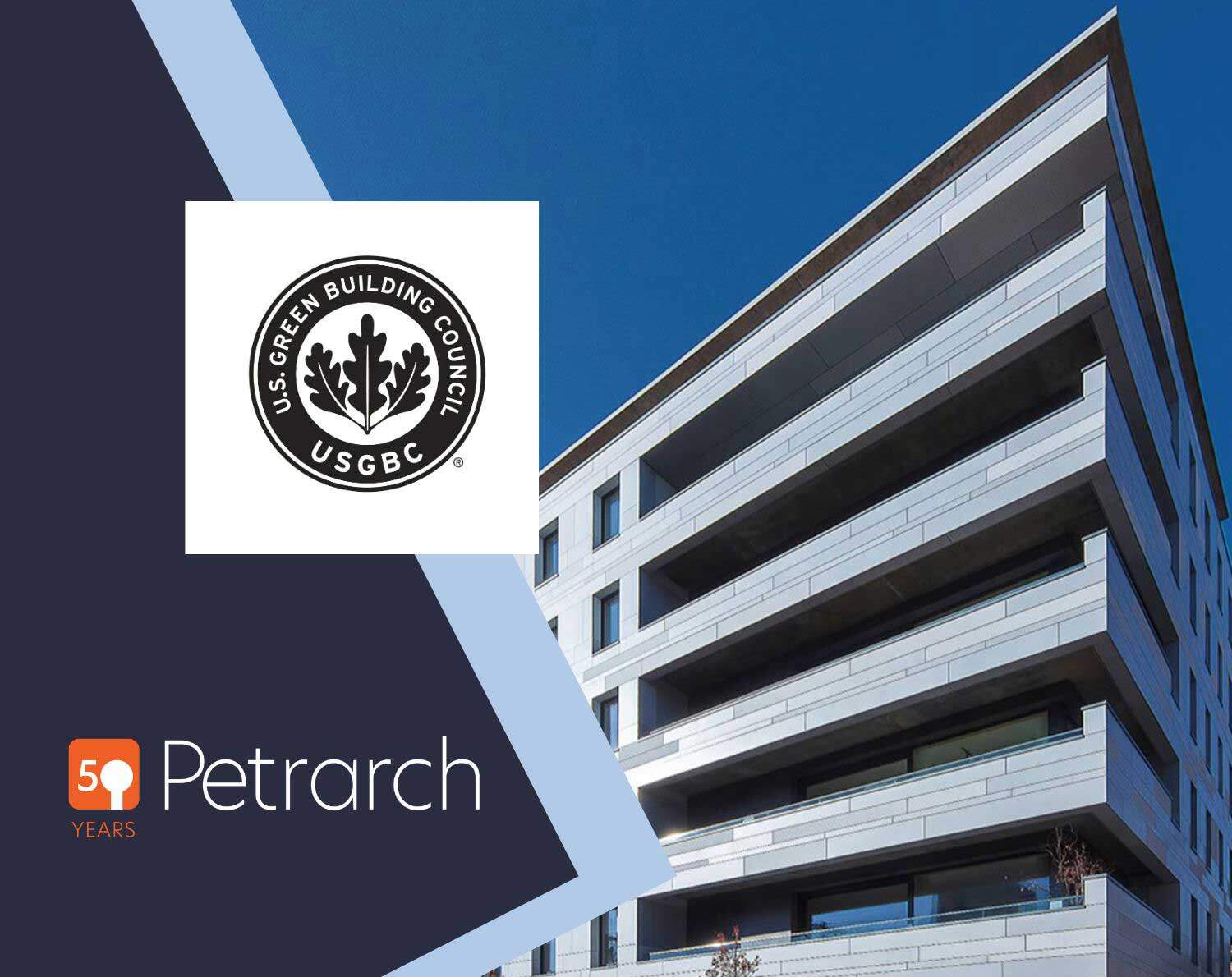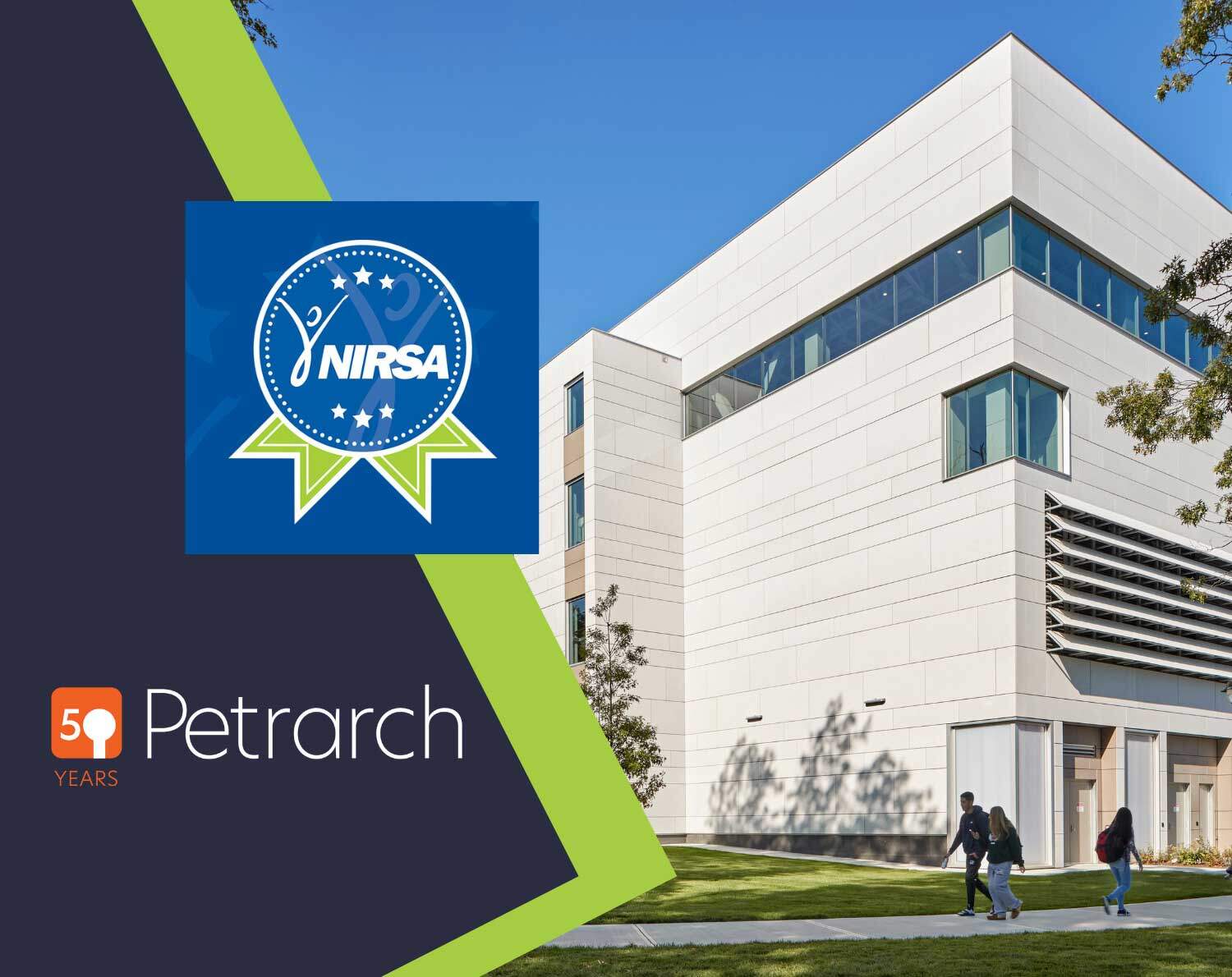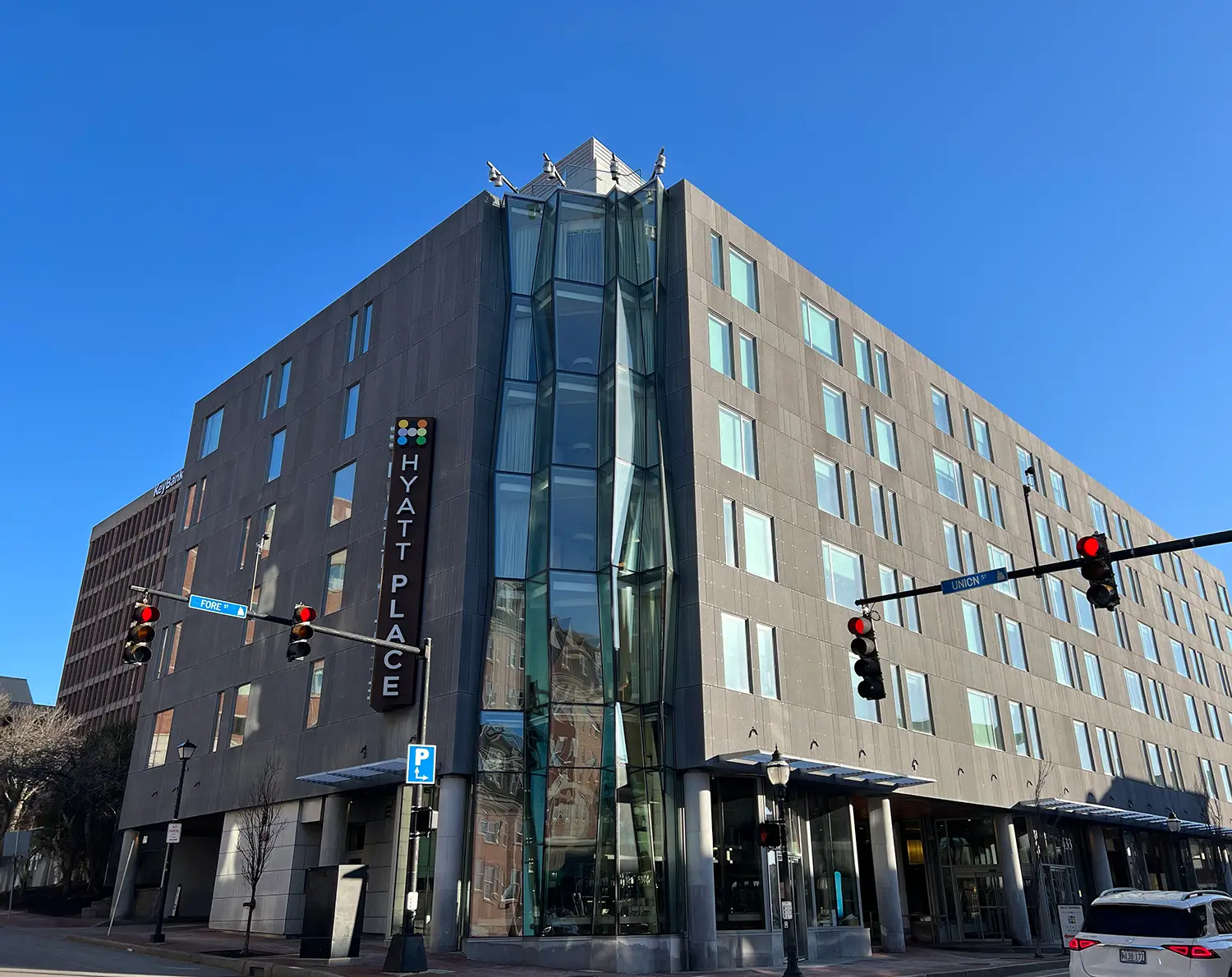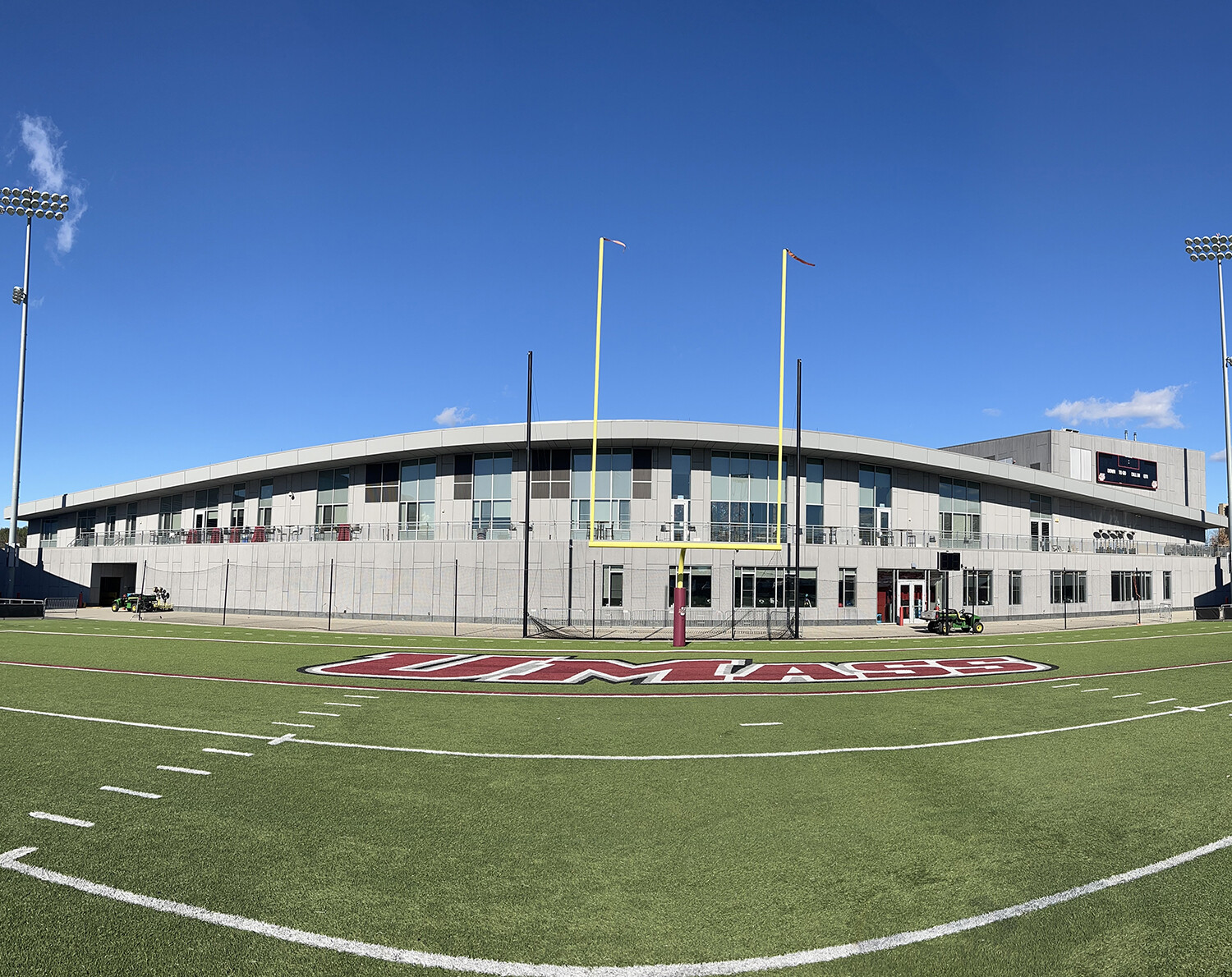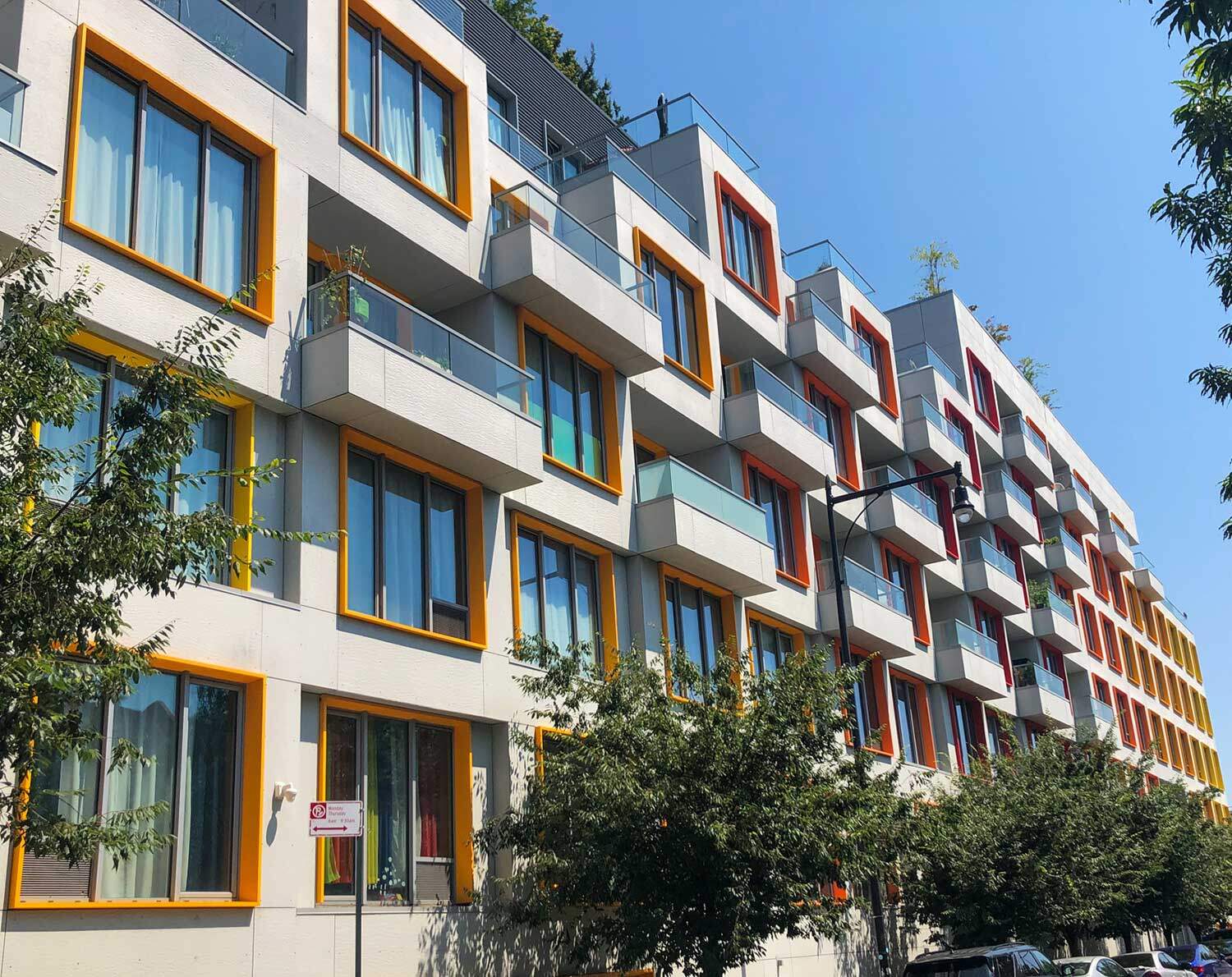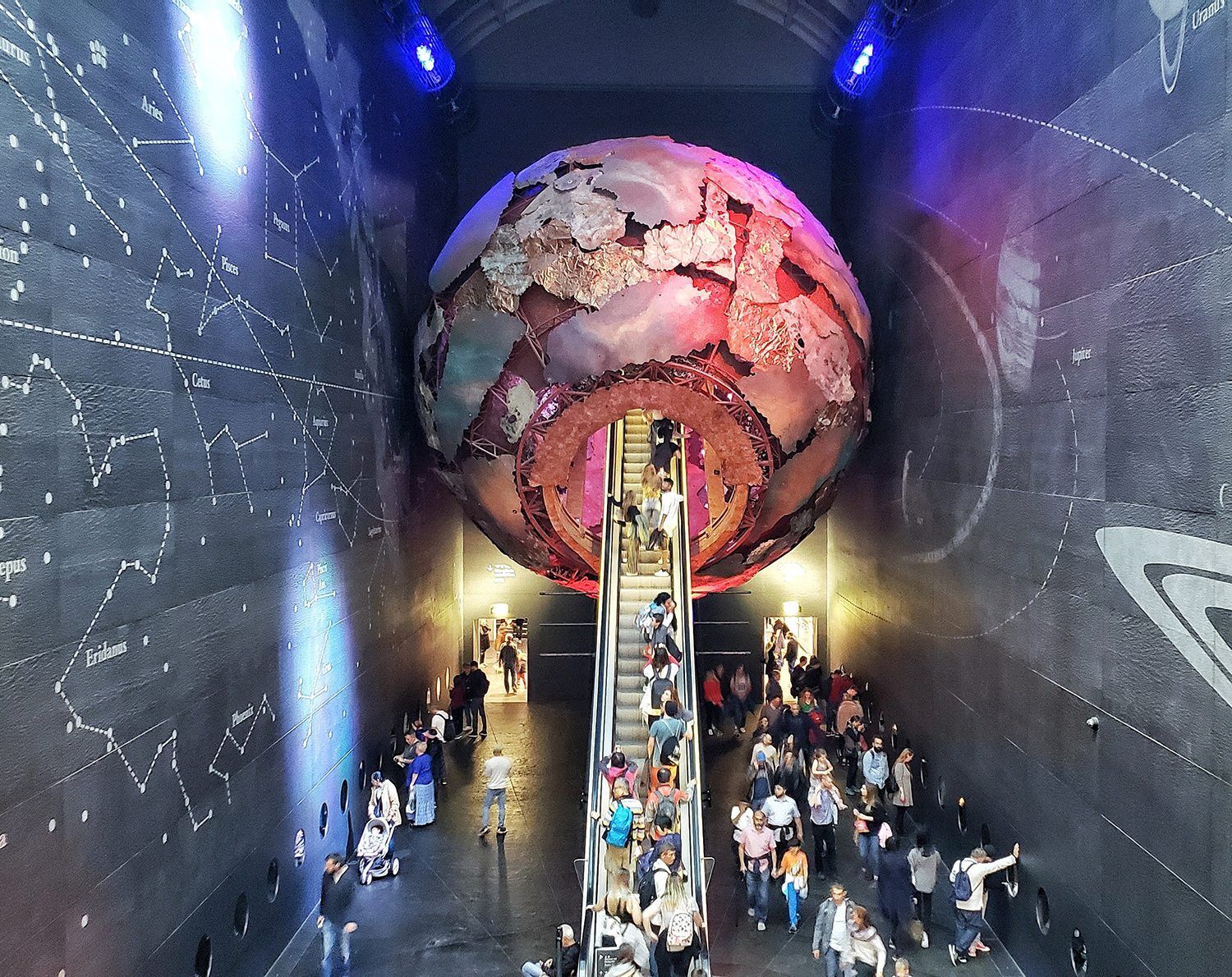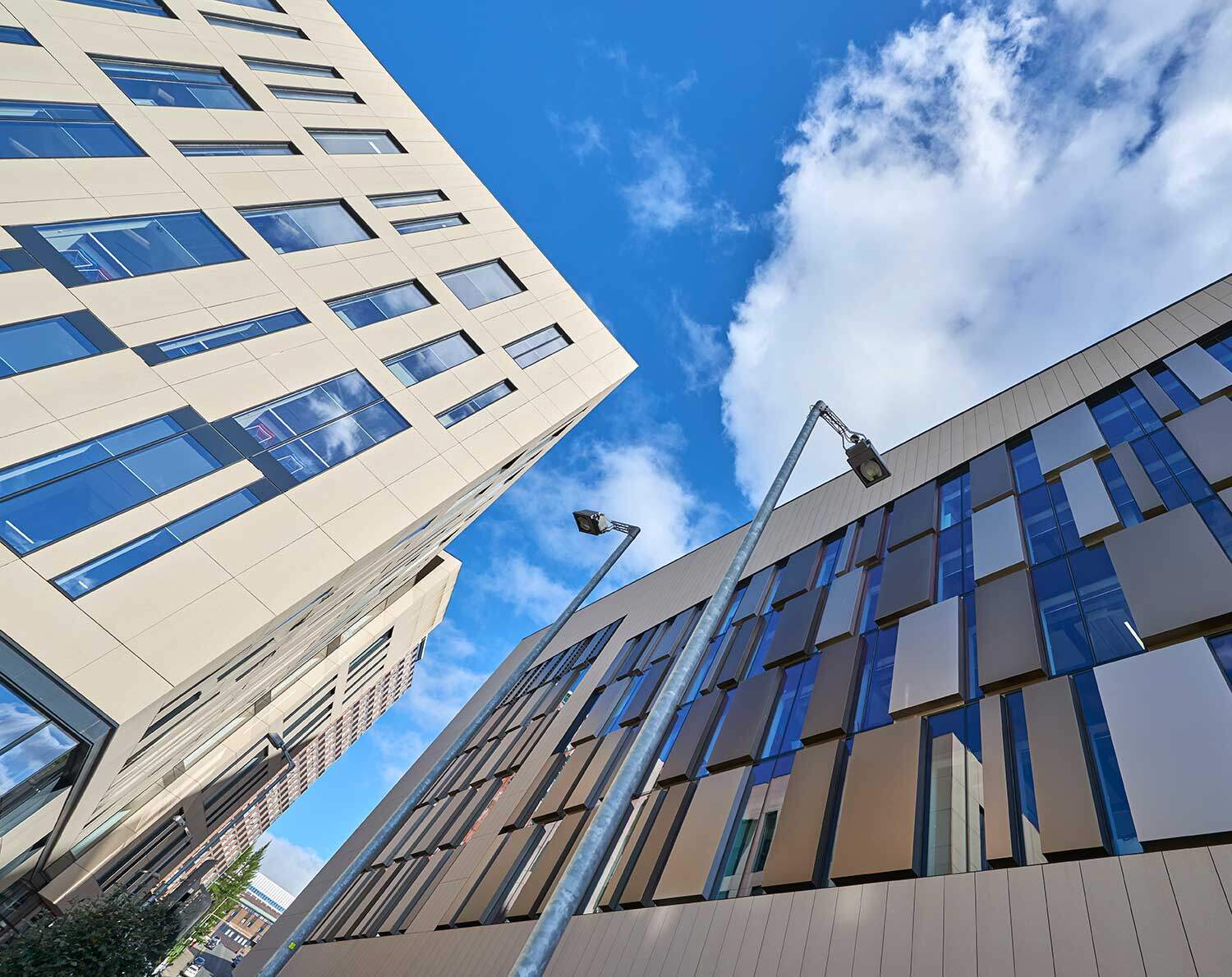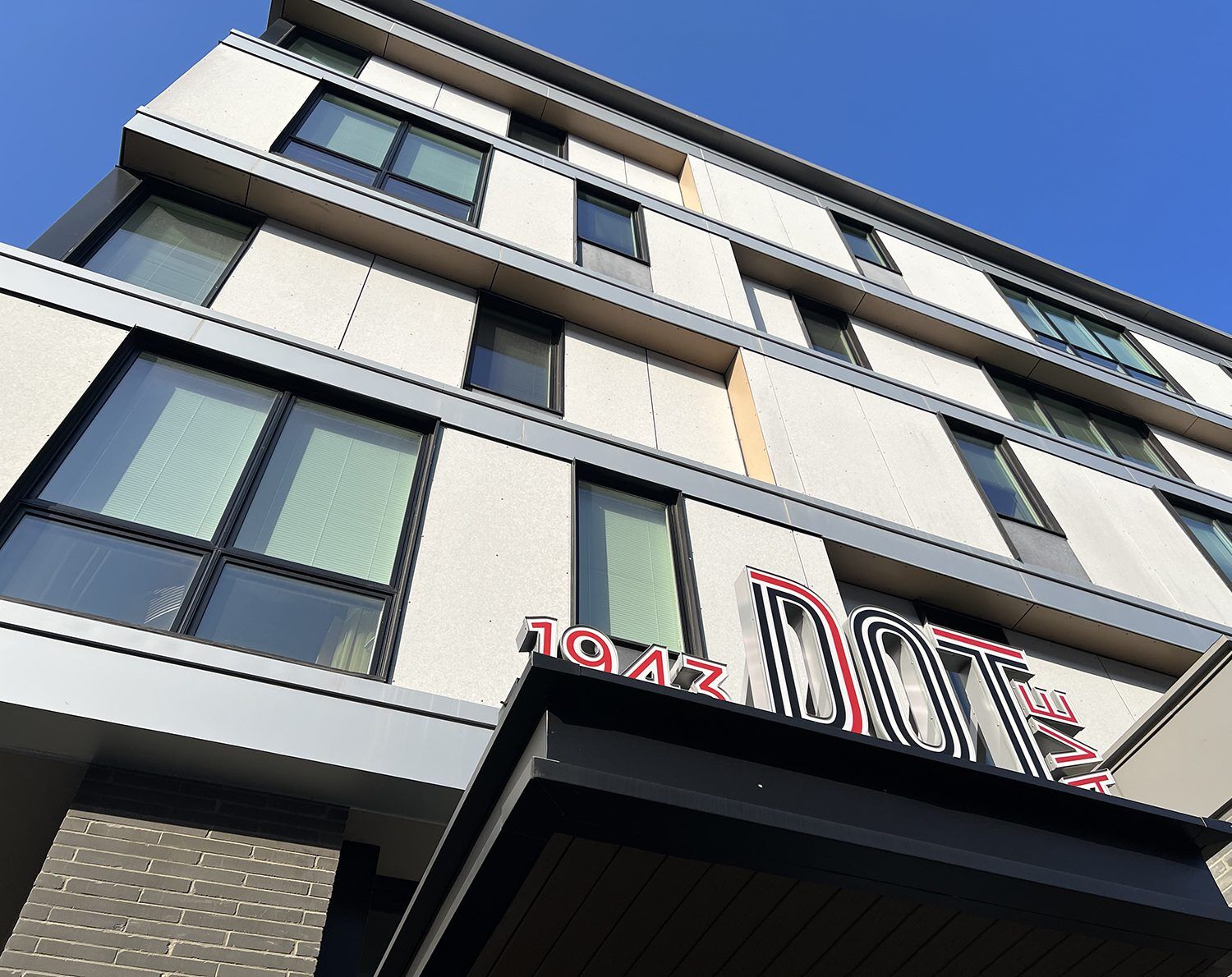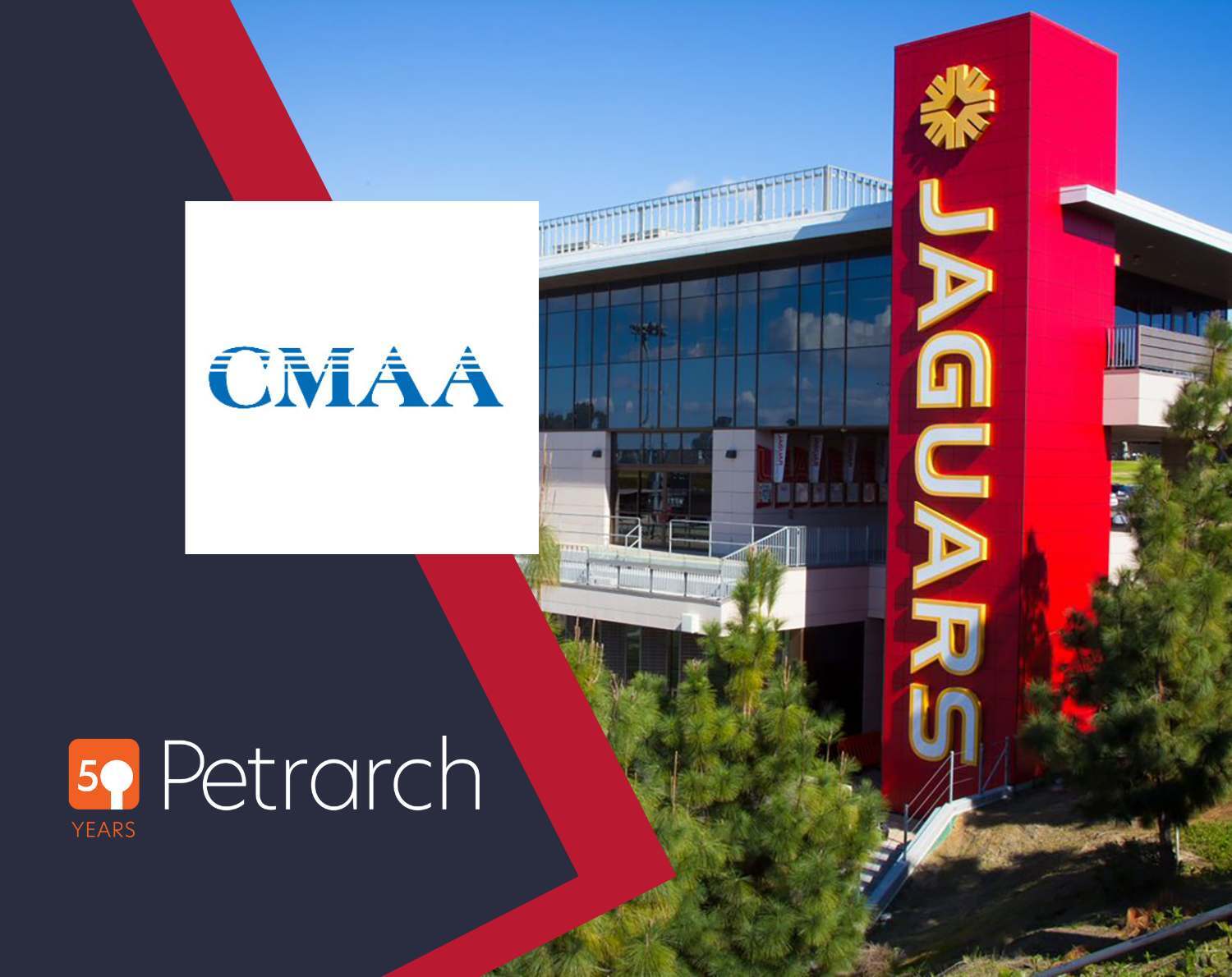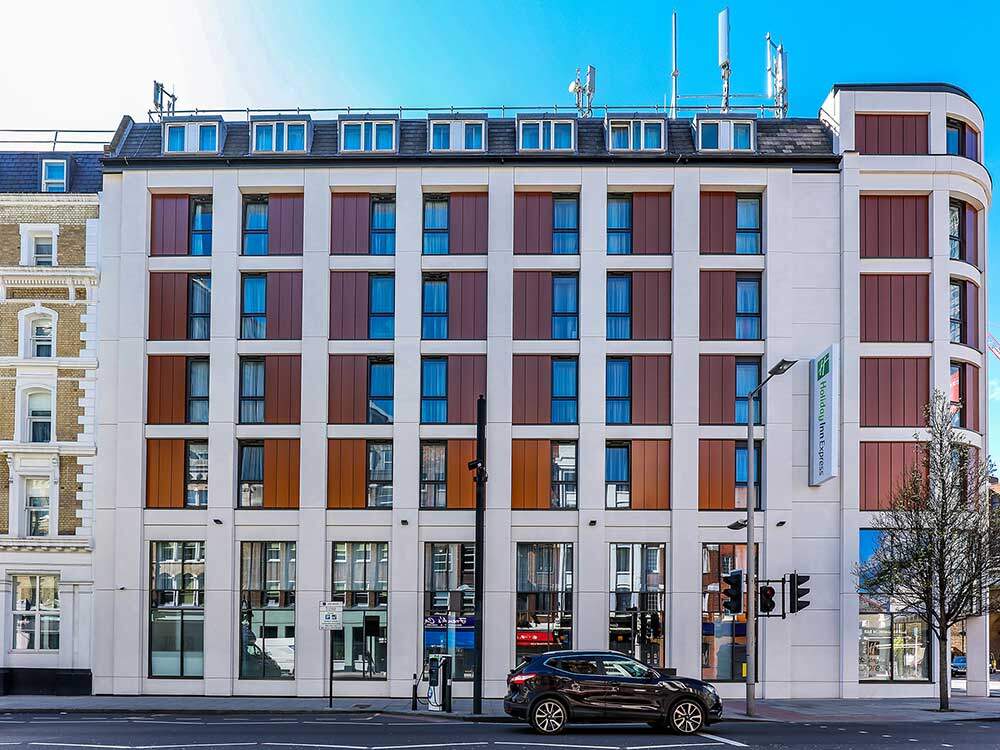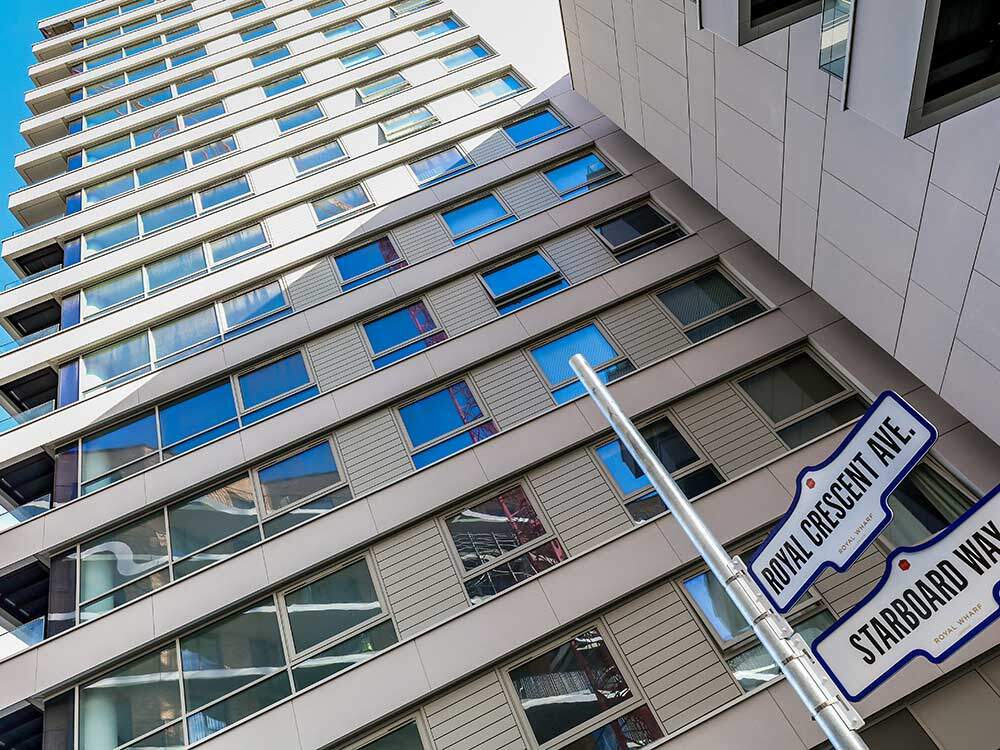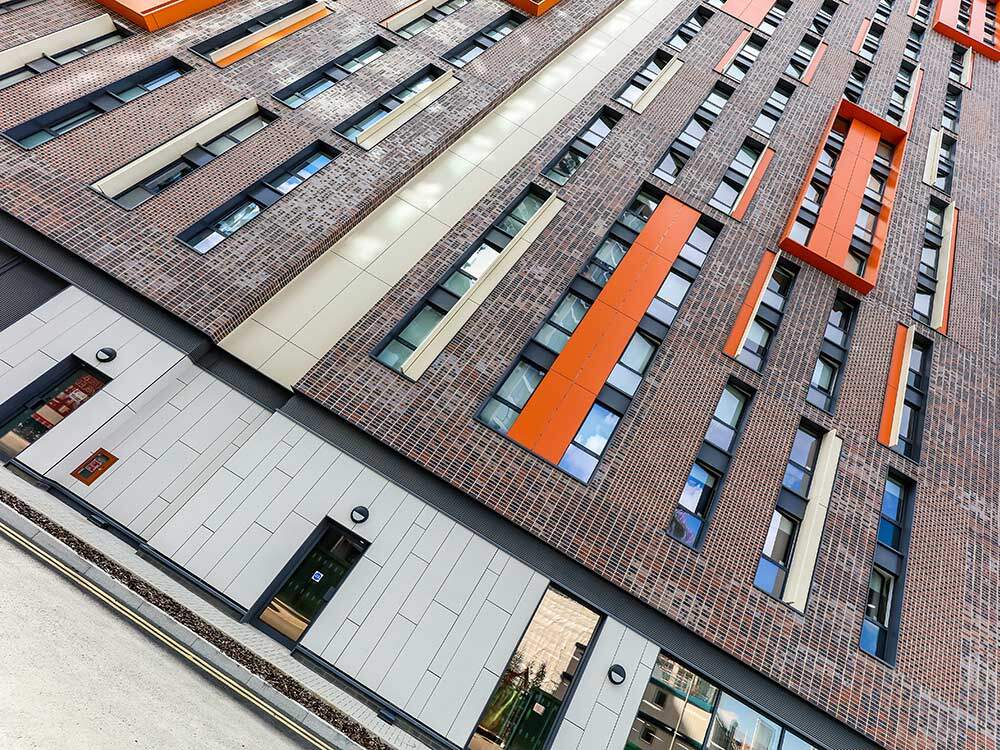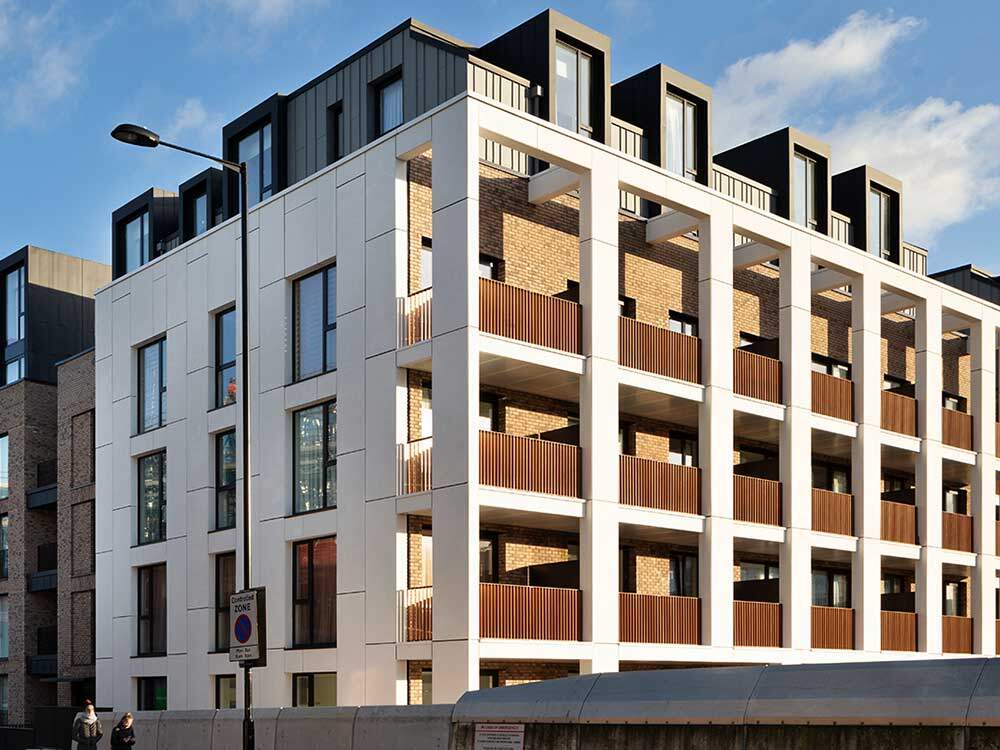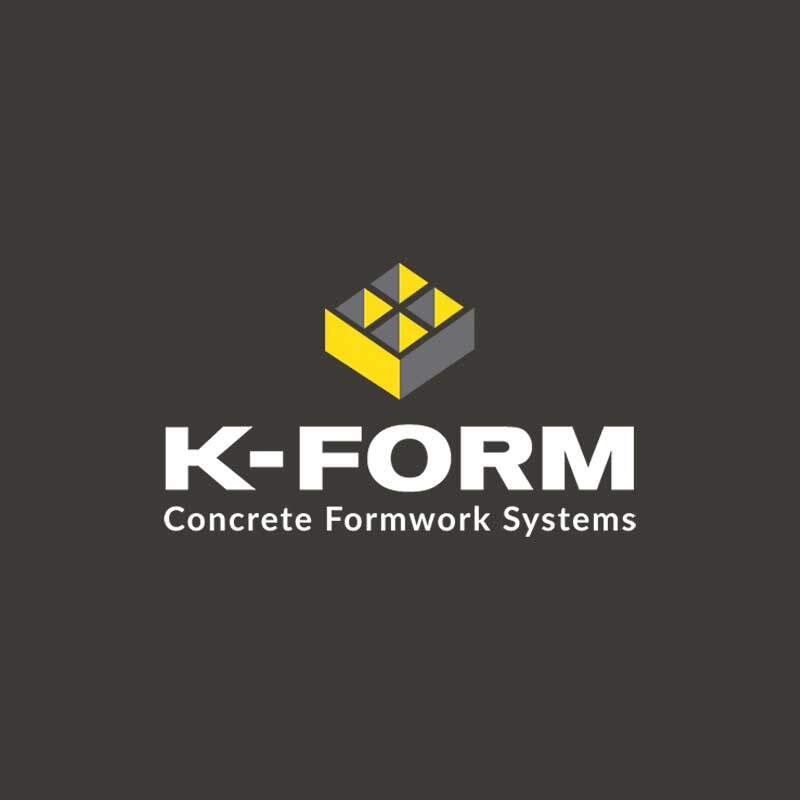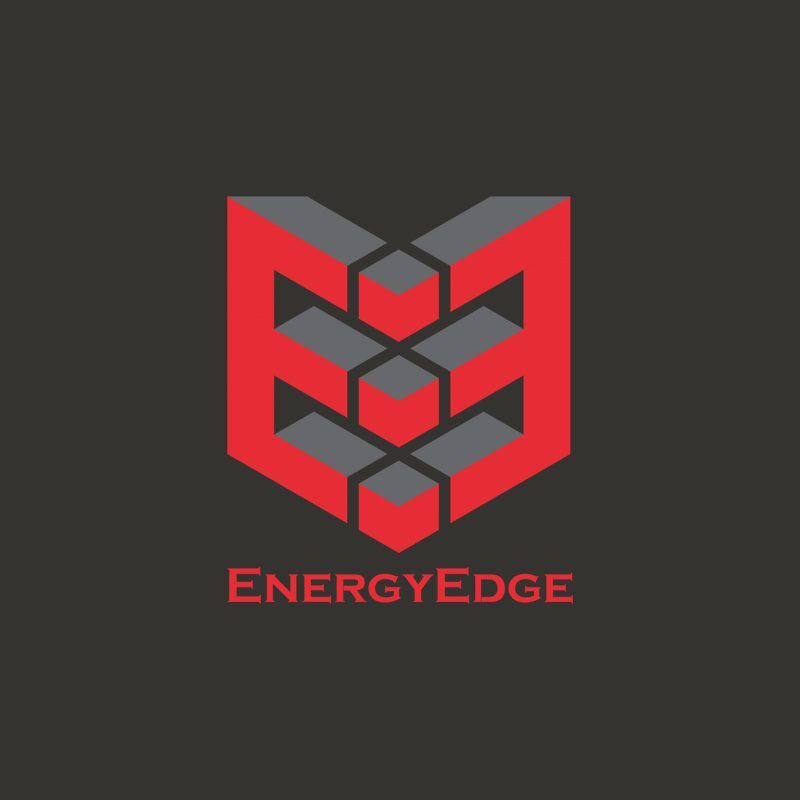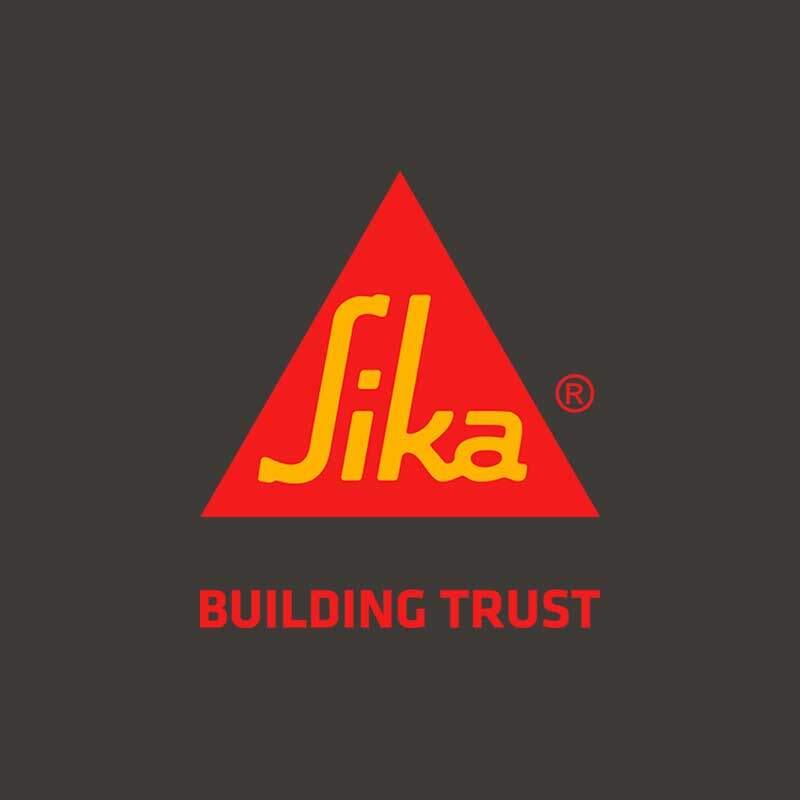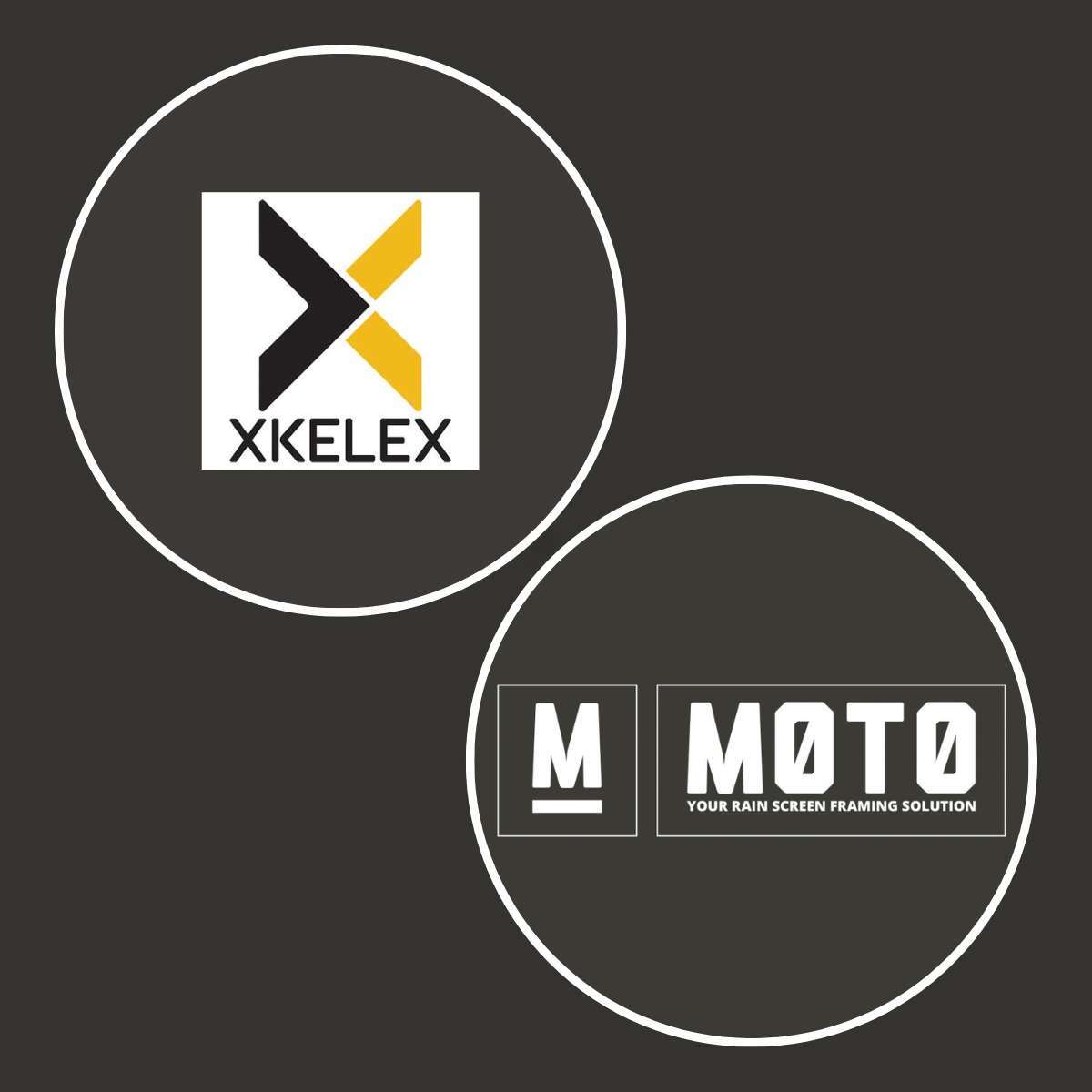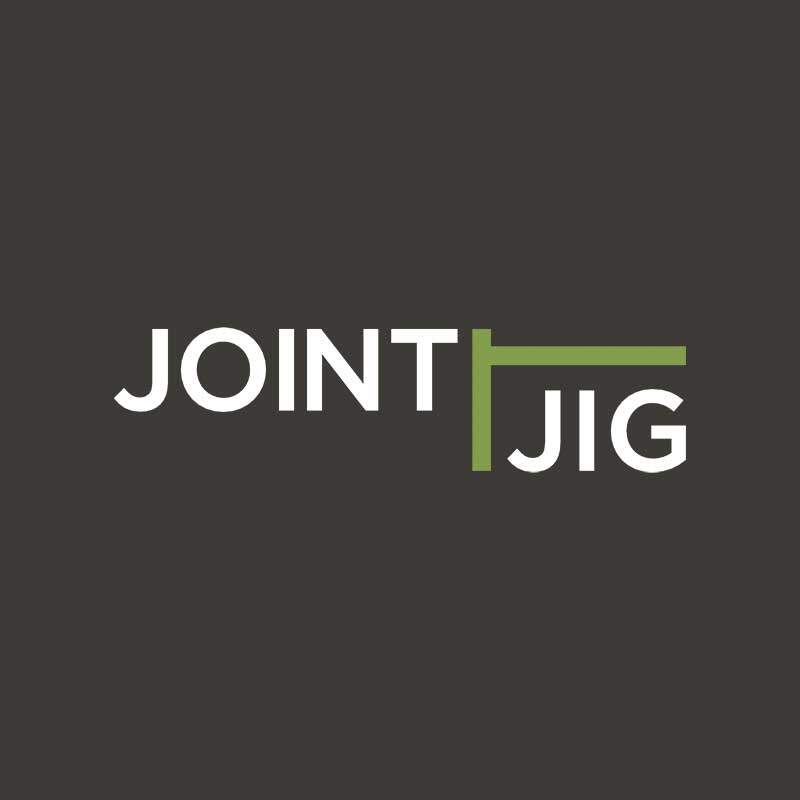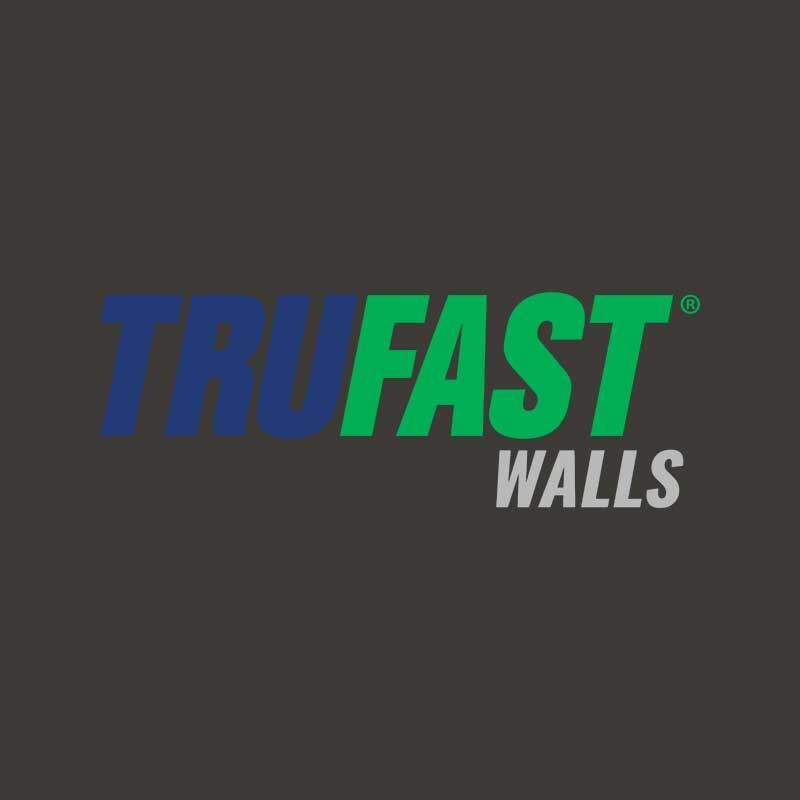Net-Positive From the Outside In
The new Oyster River Middle School in New Hampshire is the largest energy-self-sustaining school in the state. The site and school were designed to meet Net-Positive Energy criteria with on-site renewable energy technologies: a 70-borehole geothermal heating/cooling system; and photovoltaic arrays to produce electricity and hot water.
The Oyster River Middle School is the first in New Hampshire, and the eighth school project in New England, to achieve LEED V4 Gold for Building Design and Construction (LEED BD+C): Schools. The school expects to see massive estimated energy savings of $2 million over 20 years.
Petrarch Composite Stone Rainscreen Panels were chosen for their lifespan, endurance, sustainable properties, and designability.
Our firm had used Petrarch in a previous project, and after some research and reviewing samples, we found it to be the perfect product.
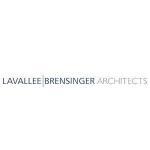
Petrarch panels are both beautiful and lightweight. Our design includes long spans over a large concert hall and another over a gymnasium, above which are standard-sized classrooms. Given the structural members, we were precluded from using a standard brick due to the weight. Knowing that we could not use brick at the upper levels, we turned towards a product that had a similar color tone that would compliment the brick rather than try to imitate it. With that in mind, we turned towards a terracotta panel look. The Petrarch product has a terracotta-looking panel that comes in multiple textures, which is what we were looking for. Ultimately, it was a great fit for us. We wanted a material that was natural, terracotta in appearance, and lightweight. Our firm had used Petrarch in a previous project, and after some research and reviewing samples, we found it to be the perfect product.
The ultra-thin profile of Petrarch Panels helped to reduce the embodied carbon produced

The wall assemblies in The Oyster River Middle School building are among the highest-performing we have ever designed, including several inches of continuous insulation outside of the structural walls. To extend so far from the structure, it is critical that our cladding system is lightweight. Durability is equally important so this soft insulation is protected from the elements. In addition to energy performance gains, the ultra-thin profile of Petrarch panels helped to reduce the embodied carbon produced during construction and was one of many strategies we used during design to reduce this project’s global warming potential to 40% below typical construction
A high-performance exterior envelope substantially reduces energy usage.

A high-performance exterior envelope, combined with the geothermal system, substantially reduces the building’s heating and cooling loads. This results in a smaller mechanical system and reduced energy usage. An extensive solar photovoltaic system consisting of roof-mounted solar panels and a structured solar array over a parking lot will generate and send power back into the electrical grid.
We calculate carbon emissions reductions will total more than 29,000 pounds per year.
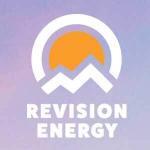
Since 2017 the school district has looked beyond academics in order to also invest in the entire community’s future. Prior to the Oyster River Middle School project, ReVision Energy installed a 79-panel solar array on the roof of the district’s maintenance facility. It will produce more than 27,000-kilowatt hours of electricity each year, offsetting the equivalent of driving more than 50,000 miles in a gas-powered car. We calculate carbon emissions reductions will total more than 29,000 pounds per year.



